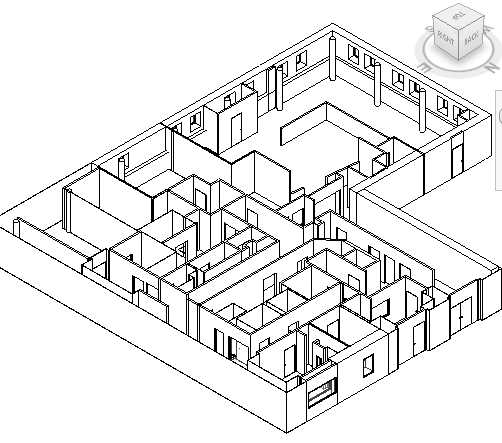It’s Alive : Buildings, Biology and Biomimicry
Posted by Jim Foster in BIM, Built Environment, New Technologies on January 26, 2012
 So there is an excellent article recently posted on the Smart Planet titled The buildings are alive: in biology, designers and architects seek answers , well worth the jump and the read. Essentially it focuses on how the built environment is incorporating designs from nature for better efficiency. From cooling techniques of termite mounds used in the Eastgate Center in Harare, Zimbabwe to bioluminscent paint that could provide free lighting.
So there is an excellent article recently posted on the Smart Planet titled The buildings are alive: in biology, designers and architects seek answers , well worth the jump and the read. Essentially it focuses on how the built environment is incorporating designs from nature for better efficiency. From cooling techniques of termite mounds used in the Eastgate Center in Harare, Zimbabwe to bioluminscent paint that could provide free lighting.
Eastgate Centre uses fans to move cool night air through chambers under office floors, which can be sent through the building during daytime heat. The building is cooled at one-tenth the cost of structures with old fashioned, energy-sucking air conditioning.
Lighting giant Phillips released details of their new bio light. Essentially “a wall of glass cells containing a live bacterial culture that emits soft green light by bioluminescence.”
“Professor Neil Spiller, an architect and the new head of the University of Greenwich’s School of Architecture & Construction, said the research team was looking at methods of using responsive protocells to clad cities in an ethical, green and sustainable way.” ‘We want to use ethical synthetic biology to create large-scale, real world applications for buildings,” he says. Such cells could be affixed to buildings to capture carbon and they envision creating buildings that are carbon negative.
This notion of how to do things has spawned a whole new field of architecture” Biomimetic Architecture. Also how do we create building built of more recycled material and material that is recyclable. Why not take our cue from things that have evolved over millennia to adapt to their environment or been designed through divinity. Either way you look at it: good choice.
BIM “Unstoppable” says UK’s Chief Construction Advisor
Posted by Jim Foster in Adoption, BIM on January 23, 2012
 As reported on the CIMCIG (Certified Institute of Marketing – Construction Industry Group) blog, yes I’ve been to the site. The Government Chief Construction Advisor Paul Morrell described BIM adoption as “unstoppable” . This took place at the Chartered Institute of Marketing Construction Industry Group Chairman’s debate. No one at the meeting disagreed with him but rather focused on the practicalities of its implementation.
As reported on the CIMCIG (Certified Institute of Marketing – Construction Industry Group) blog, yes I’ve been to the site. The Government Chief Construction Advisor Paul Morrell described BIM adoption as “unstoppable” . This took place at the Chartered Institute of Marketing Construction Industry Group Chairman’s debate. No one at the meeting disagreed with him but rather focused on the practicalities of its implementation.
The choice of software system is one risk. Mike Sheehan of WSP pointed out that there is still much work to be done developing BIM compliant software that is genuinely fit for purpose and no-one wants to be the organisation supporting the Betamax of the BIM world.
Interesting point there when couched in that language, which technologies will be the VCR and which ones will be the Betamax? Remember the old saying “you never get fired for choosing IBM” This is part of the FUD (Fear Uncertainity and Doubt) Marketing principle which might prevent the buyer from considering anything else than the market leader. So makes it very important to be the market leader, but I’m getting off point. Point being that the BIM tide is rolling.
Ultimately, the decision to embrace BIM will be leap of faith for each organisation. In answer to a question about proving the business case for implementation, Paul Morrell reflected: “Can I be bothered to do the business case? I remember when we voted on whether we wanted to move to email. The investment required to so at the time was about £4m and the immediate cost saving was to our post bill – about £100k. But we knew it was the future: unstoppable.”
I think most people understand that we have just scratched the surface with BIM but it is becoming to compelling to ignore or to argue for doing things the same way anymore.
With BIM…It’s done instantly : IMC Construction using BIM on Endo’s new HQ
Posted by Jim Foster in BIM on January 13, 2012
 Main Line news reports that the IMC Construction is using BIM on Endo Pharmaceutical’s new Headquarters.
Main Line news reports that the IMC Construction is using BIM on Endo Pharmaceutical’s new Headquarters.
The modeling has allowed site and foundation construction to begin while the building is still being designed. To expedite the preconstruction process, IMC is using Building Information Modeling, which aids with estimates and budgeting. The software gives measurements for “square yards of carpet, cubic yards of concrete and tonnage for steel,” Cottone said, adding that if the design changes, the program immediately recalculates the measurement needed for materials. In the past, it would have taken weeks or months to estimate materials. With BIM, it is done “instantly,” Cottone said. In addition, blueprints are sent digitally to the computers on site; no more unwinding rolls of papers and weighing down the corners, Cottone said. The investment in the technology is necessary to compete, Cottone said, but an even bigger investment is in training and that takes commitment by the firm.
BIM….It’s like Legos
Posted by Jim Foster in BIM on January 12, 2012
 In an article in the Boston Herald Robert Murray, the President of Bond Construction stated that BIM sped up construction by 10%, or in the case of a current project at Boston University, 2.5 Months. The new building 122,000 square feet in all will be mixed use with restaurants, offices, and classrooms and comes with a price tag of $48 million. While the article mostly emphasizes the increased speed that buildings can go up, especially important in the academic community to get a building on-line for a new year, how about the cost savings? You have a full crew off the building 2.5 months early?
In an article in the Boston Herald Robert Murray, the President of Bond Construction stated that BIM sped up construction by 10%, or in the case of a current project at Boston University, 2.5 Months. The new building 122,000 square feet in all will be mixed use with restaurants, offices, and classrooms and comes with a price tag of $48 million. While the article mostly emphasizes the increased speed that buildings can go up, especially important in the academic community to get a building on-line for a new year, how about the cost savings? You have a full crew off the building 2.5 months early?
“In the future, we’ll build the whole building in sections, not just the systems,” he said. “That’ll be the standard, almost like Legos.” – Robert Murray – President Bond Brothers
The project manager mentioned that they analyze every piece of equipment that comes into the building to make sure it has a clear path. A giant room size air conditioning unit was checked digitally to see that it could fit.
“At the project office next door to the site on Commonwealth Avenue, Bond superintendent George Antonucci sat at a desk with five computer monitors running software such as Revit, NavisWorks and AutoCad that chelp model the building’s components. An iPad running an app called Vela Mobile lets workers take the 3D model onsite. All of that technology makes it possible for workers to map every duct, pipe and wire in detail beforehand, instead of fitting them as they build. “
“It’s a hell of a lot faster …..,” Antonucci said.
Current Technologies for Reality Capture : #Revit #BIM #AU2011
Posted by Jim Foster in BIM, Built Environment, New Technologies on December 14, 2011
 I was at the recent Autodesk University in Las Vegas and sat in the session for Reality Capture for Rapid Energy Modeling by Jess Miller who discussed the current technologies and work flows to document existing buildings digitally in Revit. As it stands the 4 available today are:
I was at the recent Autodesk University in Las Vegas and sat in the session for Reality Capture for Rapid Energy Modeling by Jess Miller who discussed the current technologies and work flows to document existing buildings digitally in Revit. As it stands the 4 available today are:
- Satellite Imagery
- Laser Scanning
- 123D Catch (aka Photofly)
- PKNail Pro
All of these technologies with the exception of PKNail, yes I do have a horse in this race, require a user to extract geometry from one program and draft in another. PKNail allows a user to survey and model directly in Revit. However, the most important task is choosing the right tool for the job and usually this is driven by the scope of the project/deliverable, what the model is going to be used for, and conditions and access of the building. First, let’s look briefly at the current technologies and how they work.
Satellite Imagery
this requires getting oblique images from a source such as bing maps or Pictometry, that then can then be scaled and traced over in Revit. While it could be the least expensive of the methods it is generally a lot less accurate, requires something that allows you to scale the photos properly either on site measurements, existing plot plan, or CAD floor plan and any real details will not be included. This might prove to be an okay method to extract geometry for energy modeling but the model would end there, you could not use it to move forward with an architectural model. Additionally, it requires a sophisticated users knowledge of Revit through linking photos and extracting geometry.
Laser Scanning.
This is generally done as a service, that is you hire a company who has a laser scanner to create a pointcloud of the building you need. Estimates range from $3-$5K per day to have someone scanning a building. I know from experience that I have been quoted almost $60,000 to scan the exterior and interior of a single story industrial building and that did not include the Revit model we needed. We would have to build that ourselves from the point cloud. However, if you need an accurate 3D data set of an existing structure it is an excellent resource. You will need to import the pointcloud into Revit and trace over it to create the geometry making it at least a 2 step process. There are some technologies available such as Imaganit from Rand Technologies that will allow a user to extract some geometry to Revit but it is still a manual process. I have seen excellent use of this technology is extensive exposed MEP projects, think boiler room or oil rig, or difficult and inaccessible geometry, such as the Capitol Dome.
123D Catch,
is a program that allows you take pictures of building, send them up into the cloud and have them stitched together and served back to you as a 3D Photo model that you can then scale and extract geometry from. I have not had success using this product. I want to be successful using this product because I think it would be awesome but the few times I have sent something up to the could I get back something that looks like I am looking through a kaleidoscope. I highly recommend you take a look because as the technology progresses and computers get more powerful this will only get better.
PKNail Pro for Revit,
this is an add in to Revit that allows you to create real Revit objects, driven wirelessly from laser range finder (Disto D8) and from measurements in the field. That is measure wall, press a button and the wall is created directly in Revit. This is the only software that works within the actual BIM software so there is no need to translate or extract geometry. PKNail Pro automates current workflows and data capture and allows a user to finish the model on site. It excels at creating dimensionally correct 3D models of the both the interior and exterior. However, if you need a lot of exterior detail you may want to pair it with another of the technologies to create gutter sweeps, cornice work, etc. if that is needed on the project. PKNail also recognizes any Revit wall so you could another technology/method to create the exterior and use PKNail Pro to capture all the interior fit outs.
What it boils down to is what is needed based on the scope of the project and your budget. Choose the right tool for the job and don’t limit yourself, because who wants to use a hammer when you need a screw driver, or use a jackhammer when you need to hang a picture. I’ll work on my metaphors, you work on capturing reality.
Two great tastes together, Revit and AutoCAD make RevitCAD…
Posted by Jim Foster in BIM, CAD, Revit on November 18, 2011
 So I am just adding to the rumor mill, first started, or first heard by me, by Steve Stafford on his twitter feed, so I’ll throw him under the bus if it does not come to pass that the next release of Revit will be “Revit and AutoCAD glued together in one product called ReviCAD….” There has been a lot of bundling going in the recent years such as buy AutoCAD get Revit with it, etc. but not before has it been under one hood, so interesting if you could use AutoCAD’s drafting tool inside of a Revit view, as I’d like that but how about as a tool to increase migration to Revit, although arguably AutoCAD and Revit lead their fields as CAD drafting and BIM authoring platforms, this doesn’t require anyone to make the leap if it’s true, your just in it. So if true, as those guys in the Guiness commercials would say, “Brilliant.”
So I am just adding to the rumor mill, first started, or first heard by me, by Steve Stafford on his twitter feed, so I’ll throw him under the bus if it does not come to pass that the next release of Revit will be “Revit and AutoCAD glued together in one product called ReviCAD….” There has been a lot of bundling going in the recent years such as buy AutoCAD get Revit with it, etc. but not before has it been under one hood, so interesting if you could use AutoCAD’s drafting tool inside of a Revit view, as I’d like that but how about as a tool to increase migration to Revit, although arguably AutoCAD and Revit lead their fields as CAD drafting and BIM authoring platforms, this doesn’t require anyone to make the leap if it’s true, your just in it. So if true, as those guys in the Guiness commercials would say, “Brilliant.”
BIM Gets Wet : MWH uses Autodesk Suite of Products for Third Set of Panama Locks
Posted by Jim Foster in BIM, Revit on November 15, 2011
 I can’t write it better than the PR folks at Autodesk so excerpts from the Autodesk Press Release copied below.
I can’t write it better than the PR folks at Autodesk so excerpts from the Autodesk Press Release copied below.
November 08, 2011 at 8:58 AM
SAN RAFAEL, Calif., Nov. 8, 2011 — Autodesk, Inc. (NASDAQ: ADSK), a leader in 3D design, engineering and entertainment software, announced that MWH Global, a leader in wet infrastructure projects and programs, including water, hydropower and civil infrastructure, has been selected to receive an Autodesk BIM Experience Award. The firm is being honored for using a Building Information Modeling (BIM) process, together with Autodesk BIM software, to help design the Third Set of Locks project for the Panama Canal, intended to double the canal’s shipping traffic capacity.
To help meet the challenges of the project, MWH Global used a BIM process and Autodesk BIM solutions to address the following tasks:
- Autodesk 3ds Max Design software is being used for conceptual and detailed design and was used to produce design visualizations to help the client understand several design options.
- Autodesk Revit Architecture, Autodesk Revit Structure and Autodesk Revit MEPsoftware is being used for detailed design of the canal’s new lock structures, buildings, control towers and a multitude of supporting facilities
- AutoCAD Civil 3D software is helping create more efficient and accurate site designs.
- Autodesk Navisworks Manage software is being used for improved multidiscipline coordination and collaboration, helping resolve design conflicts prior to construction, increasing the quality of the project and helping to prevent costly field changes.
- AutoCAD Electrical software is being used by the electrical subcontractor to MWH Global for the electrical schematics and panel layouts.
- For project handover to the Panama Canal Authority, the team is capitalizing on its use of a BIM workflow to capture asset information such as equipment identification tags for inclusion in an operations manual incorporating project models and data.
Korean BIM, no, not food…BIM : GS Engineering and DPR Construction sign accord.
Posted by Jim Foster in Adoption, BIM on November 4, 2011
 As reported in the Korea Times GS Engineering & Construction has teamed up with DPR Construction. DPR, a top 50 Contractor, has fully incorporated BIM, IPD (Integrated Project Delivery) and VDC (Virutal Design and Construction) into their methodology. They both worked on the NC Soft Building in Pangyo, Gyeonggi Province.
As reported in the Korea Times GS Engineering & Construction has teamed up with DPR Construction. DPR, a top 50 Contractor, has fully incorporated BIM, IPD (Integrated Project Delivery) and VDC (Virutal Design and Construction) into their methodology. They both worked on the NC Soft Building in Pangyo, Gyeonggi Province.
“Though Korean builders are doing very good overseas, the level of construction technology and labor productivity still remains lower than those of other advanced nations,” a GS spokesman said. “By adding the high-tech IT technology to construction projects, we’ll try to become one of the top-tier builders in the world.” He said both companies have already used the BIM process in building an R&D center of NCsoft, a top online video game company in Korea, in Pangyo, Gyeonggi Province, and they will further expand bilateral BIM collaboration in the years to come.
Also reported in the article and unknown to me at the time is that BIM is required on all goverment projects over 50 billion Won, which at today’s rates would be USD $4,502,700….tasty
Gehry Does Revit : Pigs Fly Addition : BIM
Posted by Jim Foster in Adoption, BIM on October 26, 2011
So off business wire the other day I read that Gehry Technologies has teamed up with Autodesk to offer ” to transform business and design workflows with Autodesk BIM solutions.” Now there Digital Project built on DSS’s Catia Engine is a competitor to Revit, No? However, Gehry Technologies sells technology, services and consulting to firms wanting to implement BIM. And now they are offering Revit as a platform. That’ some feather in the cap for Autodesk. “This new business relationship with Autodesk is a key element of our growth strategy,” added Dayne Myers, CEO of Gehry Technologies. And there you have it, Revit equals growth, Revit equals the future. I am not saying that some BIM 2.0 Platform might come along and knock everyone off their feet, but for now Revit’s got the lead and its pulling away.
PRESS RELEASE
Oct. 19, 2011, 9:30 a.m. EDT





